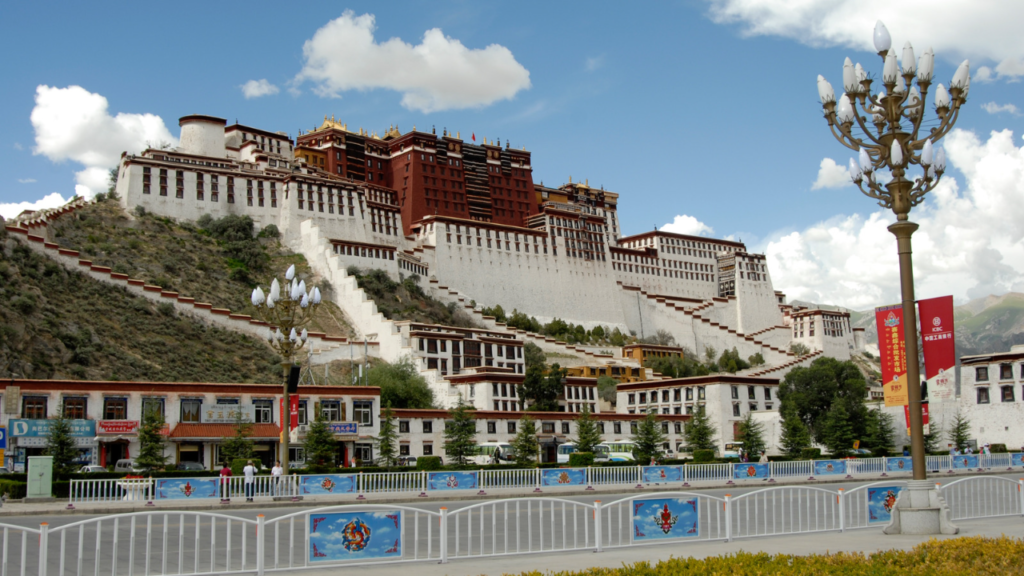Tibet, also known as the “Roof of the World,” is an autonomous region located in the western part of China. Here’s some information about Tibet:

Geography:
Tibet is on the Tibetan Plateau, the highest and largest plateau in the world. It is surrounded by the Himalayas to the south and the Kunlun Mountains to the north. The region characterized by vast expanses of high-altitude desert, snow-capped mountains, deep valleys, and numerous lakes and rivers. Mount Everest, the highest peak in the world, is located on the border between Tibet and Nepal.
Culture and Religion:
Tibetan culture deeply influenced by Tibetan Buddhism, which plays a central role in the lives of the Tibetan people. Monasteries and temples are abundant throughout the region, and Tibetan Buddhist traditions, rituals, and festivals are celebrated with great reverence. The Dalai Lama, the spiritual leader of Tibetan Buddhism, has been an important figure for Tibetans and the international community.
History and Politics:
Tibet has a complex political history. It was an independent kingdom until the 13th century when it came under Mongol rule. In the 18th century, the region became a theocracy led by the Dalai Lamas. However, in 1951, the Chinese government asserted control over Tibet, leading to the Dalai Lama’s exile in 1959. Tibet is now an autonomous region within China, although it remains a subject of political controversy and debate.
Tourism:
Tourism in Tibet offers visitors a chance to explore its unique cultural and natural heritage. Lhasa, the capital city, is a major attraction, known for its iconic Potala Palace (the former residence of the Dalai Lama), Jokhang Temple, and Barkhor Street. Other notable destinations include Mount Kailash (a sacred pilgrimage site for Buddhists, Hindus, Jains, and Bon practitioners) and Lake Namtso (one of the highest saltwater lakes in the world).
Challenges and Restrictions:
Tibet’s political situation has led to restrictions on travel and access to certain areas. Travelers to Tibet required to obtain a special permit, and independent travel generally not allowed. The Chinese government closely monitors activities and restricts access to certain regions, particularly those with historical and cultural significance.
Environment and Nature:
Tibet known for its breathtaking natural beauty and unique ecosystems. It is home to several important rivers, including the Yangtze, Yellow, and Mekong, which provide water to millions of people downstream. The region also has diverse wildlife, such as Tibetan antelope, snow leopards, yaks, and various bird species. Environmental conservation is a growing concern in Tibet due to climate change, mining activities, and the impact of tourism.
Conclusion and Summary
Tibet offers a distinctive cultural and spiritual experience, with its ancient monasteries, scenic landscapes, and deep-rooted traditions. However, due to political complexities and travel restrictions, it’s important for travelers to carefully research and plan their visit to ensure compliance with local regulations and respect for the local culture.
